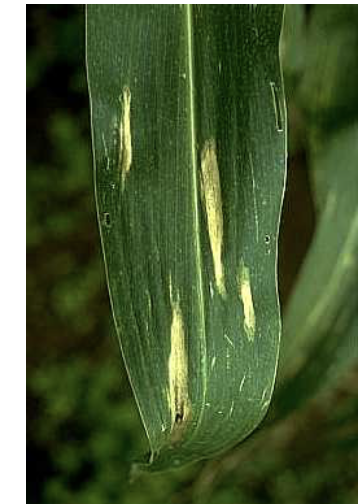Exserohilum turcicum (Helminthosporium turcicum / Dreschslera turcica / Trichometasphaeria turcica / Setosphaeria turcica)
Credits: Biovision-Infonet

(c) Courtesy EcoPort: David C. Nowell
Small oval (egg-shaped) spots first appear as water-soaked areas. They are dark and greyish-green in colour, turning greenish tan. With age they get bigger and become cigar-shaped. After rains or heavy dews, spores develop abundantly on both surfaces of the spots, particularly at the centres, giving a dark-green, velvety look to the spots. The spots may join and form large areas, which may kill entire leaves. Heavily infected leaves appear dry as if affected by drought. The disease is favoured by heavy and frequent rains, high relative humidity (above 90%) and relatively low temperatures (20-25°C). Warm dry conditions check disease development.What to do:
- Use of tolerant, resistant varieties if available
- Practise good field sanitation. Remove or plough in crop residues after harvest.
- Practise crop rotation.